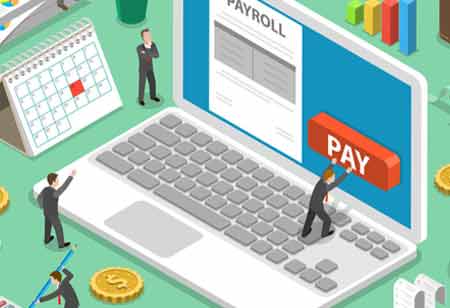THANK YOU FOR SUBSCRIBING
Be first to read the latest tech news, Industry Leader's Insights, and CIO interviews of medium and large enterprises exclusively from CFO Tech Outlook
THANK YOU FOR SUBSCRIBING

By
CFO Tech Outlook | Wednesday, July 15, 2020
Stay ahead of the industry with exclusive feature stories on the top companies, expert insights and the latest news delivered straight to your inbox. Subscribe today.
Having an improved AP process step can help better overall cash flow while the business pays what it owes
FREMONT, CA: Accounts receivable is the money that flows into a business, while accounts payable (AP) handles all the money that flows out of business. Apart from payroll, AP takes care of all the majority of the payments a company makes. And the strength of the company's AP department is directly connected to the company's strength overall. Improving the AP process, minimizing inefficiencies, and ensuring that vendors and other payees receive payment on time can save money and time in the long run.
Importance of Accounts Payable Workflow
[vendor_logo_first]Having an accounts payable workflow will help avoid scenarios like paying vendors multiple times for the same product or services, paying fraudulent or inaccurate invoices, missing payments, missing out on early payment discounts, and late payment penalties.
Simple Sharing
Cooperation between the procurement and accounts payable departments is vital for a smooth AP workflow. The procurement department is in charge of ordering supplies and services, while AP is responsible for issuing payments. For the procurement, AP, and other related departments to work together and share information easily, one alternative is to develop standards for purchase and spending. Team members from the departments will have access to the standards and know what to do when making a purchase or working with a vendor.
Another option is to put together a list of preferred vendors made available across departments to help reduce the chances of an unauthorized purchase, cutting back on the administrative effort of having to onboard new vendors or payees regularly.
Digitize Data
Digitizing data is essential as paper invoices are easy to lose or damage. It minimizes the risk of transcription errors and helps avoid paying wrong amounts to vendors. It also lessens the number of person-hours spent processing and accepting invoices.
The payment process can also be digitized by paying vendors with ACH or direct deposit. Funds from ACH or direct deposit go to the back accounts of payees almost immediately, so there is no worry that the check has gotten lost in the mail or if the payee has forgotten to deposit it.
Centralized Accounts Payable Information
The centralized system includes digital invoice collection and submission and automated payment reminders, which help reduce the work of the employees who have to input invoice data and make sure payees receive timely payments.
A centralized AP system in larger companies helps deal with vendors across different departments. It can also be useful for small companies with one or two individuals handling accounts payable. Allowing internal team members to have access to invoices and other AP information will help smooth the process, reduce confusion and questions, and avoid duplicates.
I agree We use cookies on this website to enhance your user experience. By clicking any link on this page you are giving your consent for us to set cookies. More info



